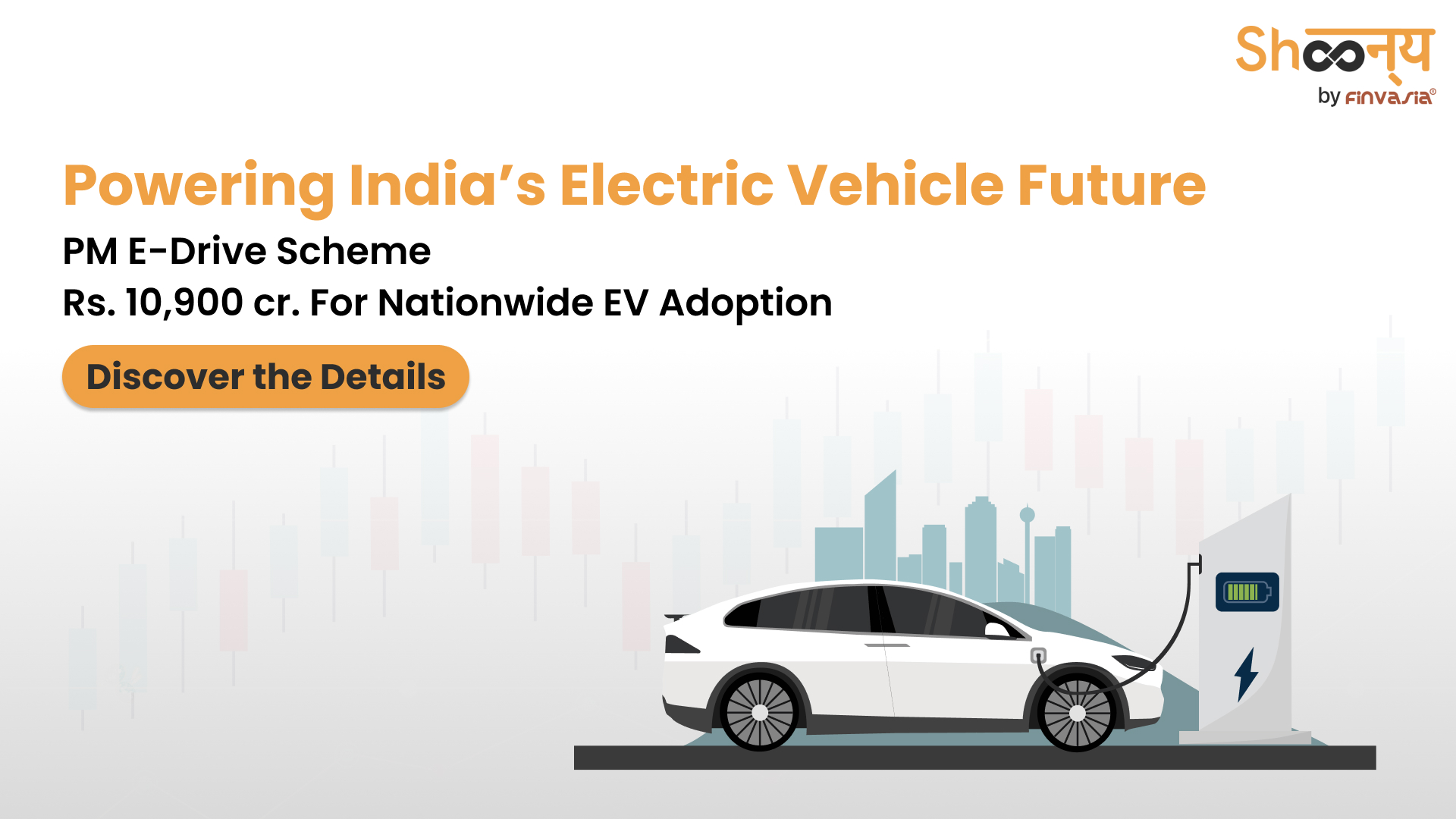PM E-Drive Scheme: ₹10,900 cr Boost to Accelerate EV Adoption

Electric vehicles (EVs) are becoming more popular in India. The government has been driving the electric vehicle revolution with various support schemes. The latest is the PM E-Drive Scheme. On September 11, the Union Cabinet approved the PM E-Drive Scheme with an outlay of Rs 10,900 crore. Electric Vehicle (EV) manufacturers have welcomed the government’s new ‘PM Electric Drive Revolution in Innovative Vehicle Enhancement (PM E-Drive) Scheme’. The scheme is aimed at promoting electric mobility nationwide. This initiative has come as a result of the non-extension of the FAME-II scheme.
This new plan will make it easier for people to buy electric two-wheelers, three-wheelers, trucks, buses, and ambulances. Plus, it will help set up a lot more charging stations across the country, making it simpler for everyone to switch to electric.
What is PM e-drive
The PM E-Drive Scheme is a new government initiative launched to boost electric vehicle (EV) adoption in India. PM Electric Drive Revolution in Innovative Vehicle Enhancement (PM E-Drive) aims to enhance EV infrastructure across India.
- It offers incentives for electric two-wheelers, three-wheelers, trucks, buses, and ambulances.
- The government has plans to set up 88,500 EV chargers nationwide.
- It supports the transition from traditional internal combustion engine vehicles to electric ones.
Driving the electric vehicle revolution, this new scheme offers subsidies worth Rs 3,679 crore.
PM E-Drive Scheme Components
- Subsidies: ₹3,679 crore allocated to encourage the use of electric two-wheelers (e-2Ws), three-wheelers (e-3Ws), ambulances, trucks, and other emerging EVs.
- Electric Two-Wheelers (e-2Ws): Support for up to 24.79 lakh units.
- Electric Three-Wheelers (e-3Ws): Support for up to 3.16 lakh units.
- Electric Buses: Support for 14,028 units.
- Electric Ambulances: ₹500 crore allocated to help deploy e-ambulances for better patient transport.
Comparison with FAME-II Scheme
The FAME-II Scheme was launched in April 2019 with a budget of ₹10,000 crore over three years. It aimed to promote electric vehicles (EVs) and support cleaner transportation. However, the budget for FAME-II was significantly reduced by 44% to ₹2,671 crore for FY25, which could slow down EV adoption in India.
- FAME-II aimed to encourage the use of renewable energy for transportation.
- After the subsidy cut in June, EV registrations dropped to around 45,000 units. As of August, registrations have improved to 88,473 units.
The new PM E-Drive Scheme, in contrast, provides incentives for electric two-wheelers, three-wheelers, trucks, buses, and ambulances.
The FAME subsidy, introduced by the Department of Heavy Industry in 2015, expired on March 31 this year. It was superseded by the Electric Mobility Promotion Scheme (EMPS), 2024, which came into effect from April 1.
Impact of PM’s E-Drive Scheme on EV Manufacturers
The new PM E-Drive Scheme is set to provide a substantial boost to Electric vehicle makers
and EV manufacturers especially those in the two-wheeler segment. This comes as a relief to many in the industry who have been concerned about slowing growth due to reduced FAME-II subsidies.
Leading figures like Ather’s cofounder and CEO Tarun Mehta have highlighted that the slowdown in the sector was largely due to the FAME subsidy cuts.
Overall, the PM E-Drive Scheme is expected to help EV manufacturers through growth and innovation in the electric vehicle market.
Impact of Pricing and Incentives on Electric Vehicle Costs
Government schemes have a significant effect on the pricing of electric vehicles (EVs) for customers. For instance, the incentive cap under the FAME scheme was reduced from ₹15,000 per kWh to ₹10,000 per kWh starting June 1, 2023. This cut in subsidies led to higher retail prices for Ather’s electric two-wheelers (e-2Ws), with increases ranging from ₹20,434 to ₹30,285.
Due to the reduced subsidies, Ather experienced a slight drop in revenue, from ₹17,809 million in Fiscal Year 2023 to ₹17,538 million in Fiscal Year 2024.
Key Gaps and Future Developments in Electric Vehicle (EV) Infrastructure
Some industry experts have expressed concerns about the new scheme not including battery swapping technology.
The PM E-Drive Scheme goes beyond FAME by including support for charging infrastructure.
- Charging Stations:
- 22,100 fast chargers for electric four-wheelers (e-4Ws).
- 1,800 fast chargers for electric buses.
- 48,400 fast chargers for electric two-wheelers (e-2Ws) and three-wheelers (e-3Ws).
- Budget for Charging Infrastructure: ₹2,000 crore.
The scheme’s focus on expanding the charging network is expected to address key challenges related to EV adoption and enhance the overall infrastructure.
Conclusion
The PM E-Drive Scheme is set to play a crucial role in driving the EV adoption in India. By providing substantial subsidies and improving charging infrastructure, the scheme aims to boost the adoption of electric vehicles.
Source: MoneyControl ______________________________________________________________________________________
Disclaimer: Investments in the securities market are subject to market risks; read all the related documents carefully before investing.








